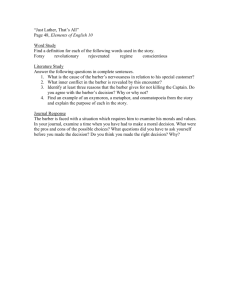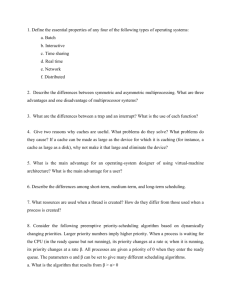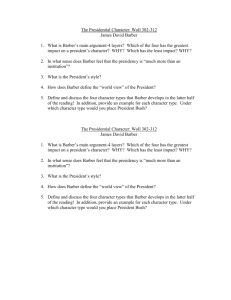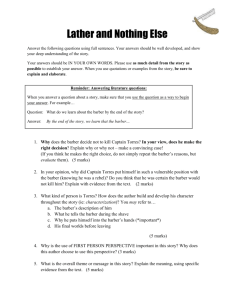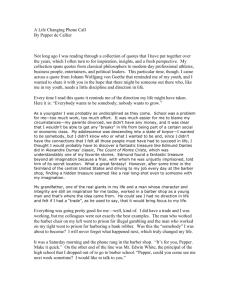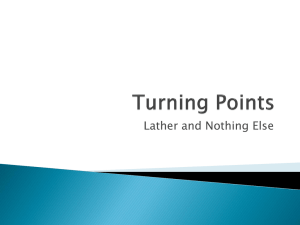F
advertisement
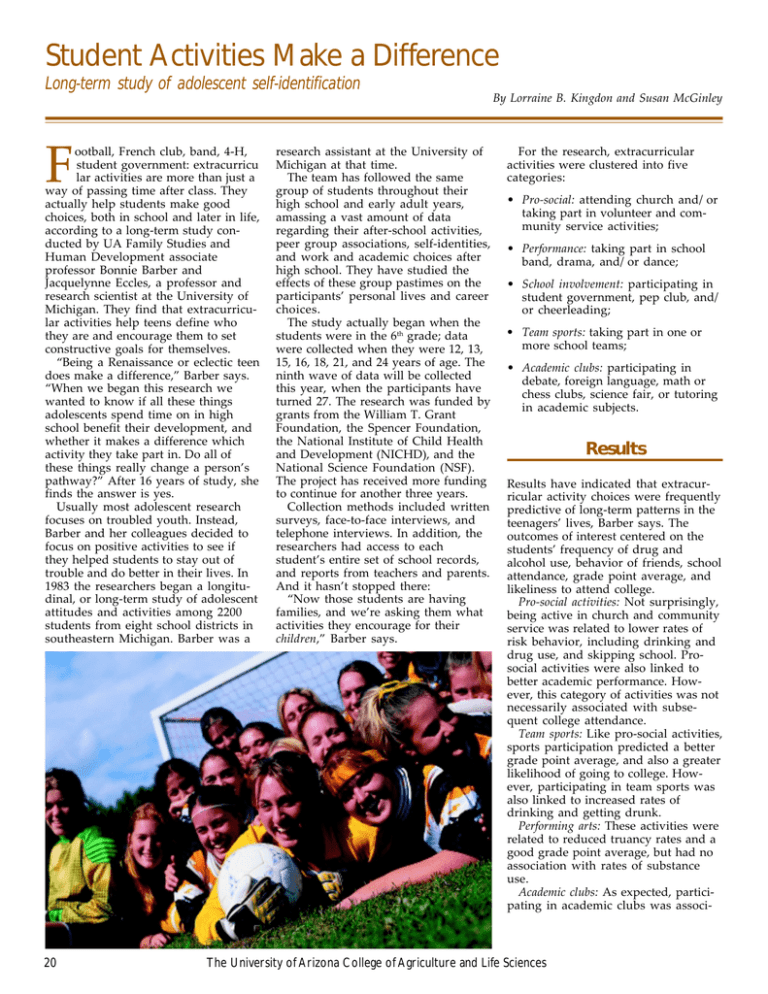
Student Activities Make a Difference Long-term study of adolescent self-identification F ootball, French club, band, 4-H, student government: extracurricu lar activities are more than just a way of passing time after class. They actually help students make good choices, both in school and later in life, according to a long-term study conducted by UA Family Studies and Human Development associate professor Bonnie Barber and Jacquelynne Eccles, a professor and research scientist at the University of Michigan. They find that extracurricular activities help teens define who they are and encourage them to set constructive goals for themselves. “Being a Renaissance or eclectic teen does make a difference,” Barber says. “When we began this research we wanted to know if all these things adolescents spend time on in high school benefit their development, and whether it makes a difference which activity they take part in. Do all of these things really change a person’s pathway?” After 16 years of study, she finds the answer is yes. Usually most adolescent research focuses on troubled youth. Instead, Barber and her colleagues decided to focus on positive activities to see if they helped students to stay out of trouble and do better in their lives. In 1983 the researchers began a longitudinal, or long-term study of adolescent attitudes and activities among 2200 students from eight school districts in southeastern Michigan. Barber was a 20 research assistant at the University of Michigan at that time. The team has followed the same group of students throughout their high school and early adult years, amassing a vast amount of data regarding their after-school activities, peer group associations, self-identities, and work and academic choices after high school. They have studied the effects of these group pastimes on the participants’ personal lives and career choices. The study actually began when the students were in the 6th grade; data were collected when they were 12, 13, 15, 16, 18, 21, and 24 years of age. The ninth wave of data will be collected this year, when the participants have turned 27. The research was funded by grants from the William T. Grant Foundation, the Spencer Foundation, the National Institute of Child Health and Development (NICHD), and the National Science Foundation (NSF). The project has received more funding to continue for another three years. Collection methods included written surveys, face-to-face interviews, and telephone interviews. In addition, the researchers had access to each student’s entire set of school records, and reports from teachers and parents. And it hasn’t stopped there: “Now those students are having families, and we’re asking them what activities they encourage for their children,” Barber says. By Lorraine B. Kingdon and Susan McGinley For the research, extracurricular activities were clustered into five categories: • Pro-social: attending church and/or taking part in volunteer and community service activities; • Performance: taking part in school band, drama, and/or dance; • School involvement: participating in student government, pep club, and/ or cheerleading; • Team sports: taking part in one or more school teams; • Academic clubs: participating in debate, foreign language, math or chess clubs, science fair, or tutoring in academic subjects. Results Results have indicated that extracurricular activity choices were frequently predictive of long-term patterns in the teenagers’ lives, Barber says. The outcomes of interest centered on the students’ frequency of drug and alcohol use, behavior of friends, school attendance, grade point average, and likeliness to attend college. Pro-social activities: Not surprisingly, being active in church and community service was related to lower rates of risk behavior, including drinking and drug use, and skipping school. Prosocial activities were also linked to better academic performance. However, this category of activities was not necessarily associated with subsequent college attendance. Team sports: Like pro-social activities, sports participation predicted a better grade point average, and also a greater likelihood of going to college. However, participating in team sports was also linked to increased rates of drinking and getting drunk. Performing arts: These activities were related to reduced truancy rates and a good grade point average, but had no association with rates of substance use. Academic clubs: As expected, participating in academic clubs was associ- The University of Arizona College of Agriculture and Life Sciences ated with a better grade point average and the likelihood of going to college, but, like performing arts, was not connected to frequency of risky behavior. All of these activities were linked to better academic performance, with athletic participation offering a rather mixed blessing, according to Barber. Although student athletes drank more and engaged in more risky behaviors, they also showed higher levels of college attendance than even those teens in pro-social activities. Sports activities continued to be associated with especially positive results for women all the way into young adulthood, with those who had been female athletes in high school reporting jobs having more autonomy and better long-term prospects. Regarding the behavior of friends, the research showed that teens in any activity have more academically focused peers, which helps explain the relationship between activity participation, good grades, and future college attendance. Among the pro-social students, their friends aren’t drinking either, which may make them less likely to skip class or drink. These are extremely low-risk peers. However, this type of activity did not predict well for college attendance. Putting it all together From the outset, Barber and her colleague, UA research specialist Margaret Stone, wondered what it was about these activities that caused students to turn out so well. “We knew it wasn’t just the type of activity selected,” Barber says. “It seemed there was something the activity did, and we didn’t know how that worked. So we checked peer groups–was there something about hanging out with a peer group in these activities that kept students out of trouble and focused them more on academics?” That turned out to be the case: students who participated in positive extracurricular activities were spending time with a different group of peers than they would have met if they had stayed out of the activity. In addition to spending time with adult leaders who cared about them, and being attached to an organization they could be proud of, teens enjoyed their activity peer groups. As a result, Barber says, they developed a collective identity of shared positive values. The researchers noted that as youth move into and through adolescence, individuals become identified with particular groups of friends. Being a member of one of these crowds helps structure what they do with their time and influences the kinds of values and norms they are exposed to. “Knowing what an adolescent is doing often tells us a lot about who the adolescent is hanging out with,” Barber says. “Overall, the reason the activities had such beneficial results is that they affected the way the adolescents saw themselves within the peer culture. They integrated who they were with a set of social traditions.” Thus extracurricular activities are not just a way of passing time, Barber contends. They extend a richness of possibilities a student wouldn’t get by attending school and doing homework, with no outside interests. Possible developmental benefits include contributing to the community, belonging to a valued group, establishing supportive networks of adults and peers, and working in a challenging setting. “The long-term accrued benefits of activity participation and the related association with similar friends extend well beyond adolescence,” Barber says. “In the future we will focus on finding out to what degree our study participants carry these values forward and pass them on to the next generation.” ❖ The School of Family and Consumer Sciences The School of Family and Consumer Sciences (formerly named the School of Family and Consumer Resources) is one of the largest units in the College of Agriculture, with a current enrollment of 700 undergraduate students and 50 graduate students. The school provides instructional, research, and extension programs within two divisions: Family Studies and Human Development (FSHD); and Retailing and Consumer Studies (RCS). Although the SFCS has traditionally focused more on societybased issues, SFCS director Soyeon Shim says she sees a niche the school could fill that would unite it more closely with agricultural issues as well. “As the trend continues toward consumer-driven, valueadded production in commercial agriculture, our retailing program has the opportunity to establish itself as a leading unit for consumer studies, market trade, food retailing and agricultural business,” Shim says. “At the same time, the College of Agriculture and Life Sciences seeks to address a wider range of family needs in both urban and rural areas. Our extension/ outreach programs throughout Arizona will continue to focus on strengthening families and promoting adolescent health and youth development, consumer education, and retail business development.” Many of the school’s most successful programs are based on partnerships, including the recently established Institute for Family, Youth and Children, which collaborates with state and community organizations; and the Southwest Retail Center, which operates through a collaboration with many commercial retailers. For more information on the School of Family and Consumer Sciences, visit the web page at: ag.arizona.edu/fcs. Agricultural Experiment Station Research Report 21
